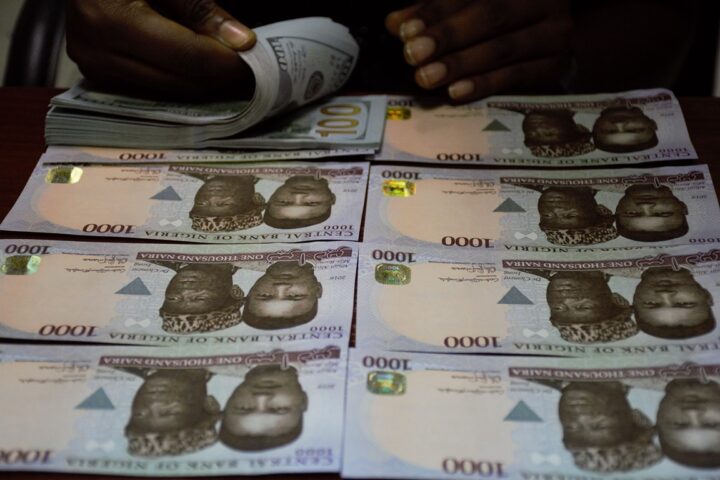BY FESTUS OKOROMADU
The pressure on Nigeria’s foreign exchange market has dashed the initial optimism following the partial clearance of the forex backlog.
On November 7, the naira experienced a 2.61 percent depreciation to N1, 030/$ from the month’s high of N1, 020/$.
This downward trend has persisted, leading the Naira to its current rate of N1, 140/$.
Analyst believes that the depreciation underscores doubts about the effectiveness of the partial forex backlog clearance and anxieties surrounding forex supply. Similarly, in the Nigerian autonomous foreign exchange market, the Naira hit a record low rate of N1, 100/$.
The overall depreciation is tied to low dollar supply, evident in the 19.08 percent decline to $127.65 million from $131.11 million at the beginning of November.
This depreciation of the naira at the parallel market follows a recovery phase where the Naira strengthened from its record low of N1, 300/$.
The Central Bank of Nigeria’s unexpected announcement of settling approximately $1 billion of its $6.7 billion Non-Deliverable Forwards backlog contributed to this rebound.
The parallel market witnessed the Naira strengthening to N1, 020/$, influenced by profit-taking and speculative activities.
However, financial analysts think that while the CBN’s effort to clear the forex backlog is anticipated to foster investor confidence and bring short term stability to the Nigerian foreign exchange market, the recent setbacks underscore persistent uncertainties.
Exchange rates wield significant influence in Nigeria’s economic landscape, given its heavy reliance on oil exports, foreign exchange earnings, and global market dynamics.
However, the constrained availability of FX reserves, currently overstated at $33.31 billion, poses challenges for the CBN in defending the currency.
With a supply shortfall in the FX market, the risk looms that the rate could depreciate further.
Worse, the CBN’s unexpected postponement of the MPC meeting has heightened anxiety and eroded investors’ confidence. This is expected to weigh on the Naira.
Expectations of a further decline in oil prices, currently below $90 per barrel, could impact the country’s oil earnings, further constraining supply in the forex market.
Moreover, other primary sources of forex supply have seen choppy performance, with total capital imports falling by 8.85 percent in Q2’2023, and FPI declining by an average of 83.54 percent from Q1’2023.
The bottom line, however, is that the long-term appreciation of the Naira depends on sustained dollar inflows.
Meanwhile, the exchange rate has been a key driver of inflation in Nigeria, owing to the country’s heavy reliance on imports. With the naira weakening, inflation is likely to remain elevated.
Already, headline inflation has spiked further to 27.33 percent in October, also supported by higher food prices and money supply growth.
Higher inflation rates will widen the negative real return on investments and could potentially prompt the CBN to adopt a more aggressive monetary policy stance in pursuit of its core price stability goals.
Noteworthy is that the current NAFEM rate of N1, 140/$ remains significantly weaker than the 2024 budget assumption of N700/$.
Experts say this could pose a constraint on the government’s ability to manage the budget, especially due to its high dependence on imports. Worse, Nigeria has external debt denominated in dollars.
In Q2 ’23 alone, external debt gulped $43.16 billion, therefore, a weaker naira means that the country will have to allocate more local currency to service the same amount of debt.
Higher debt service payments would strain the government budget, diverting funds from other critical areas such as infrastructure and social services.



